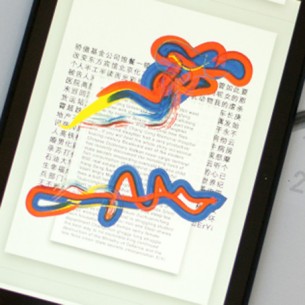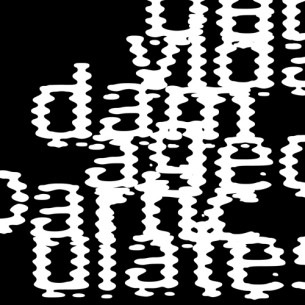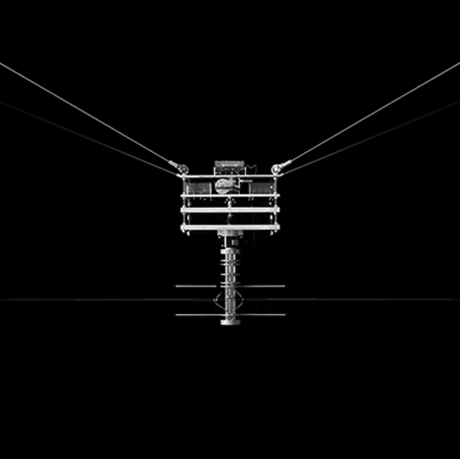Abstrakte Welten Realisieren
The exhibition is part of the reSource 003: P2P Vorspiel presented by transmediale and CTM Festival.
Opening: Saturday 26.01.2013, 20:00
Exhibition: 27.01.-03.02., 12:00-20:00 Mon-Sun
with works by David Bowen, Verena Friedrich, Markus Hoffmann and Lucas Buschfeld, Sascha Pohflepp and Alexandra Daisy Ginsberg
The physical sensation or translation of digital data of all kinds, the collection of which rises exponentially in today’s society, focuses primarily on the two-dimensional methods of visual representation in the form of numerical data, images, graphs or other visualisations (the term already refers strictly to visual representation) . In this situation the screen is seen as the standard output device. How can we translate data differently and represent it? Can one output device (such as a screen) leave the actual space or perhaps even be controlled through other channels of our perception? In the exhibition we will deal with the physical perception of the digital. The presentation of data is limited to auditory and visual media, the digital is created mostly in combination with only a two-dimensional and thus limited “(Ab) image” (german Abbild). In this exhibition - we would like to open and extend the reception dimension of digital and virtual content.
For the calculation we focus first on the Visual: The screen serves as the output medium, limited to a one-dimensional representation of space, that is a foreshortening of the space through subtracting the Z-axis. The result simulates the recipient, therefore, only one (virtual) space on a two dimensional surface, but it does not simulate it exactly. This technique has been applied in perspective drawing, and was later mechanised through a photo/film camera. The experiments of the Expanded Cinema movement of the early 60’s already tried to break this perception of virtuality. They generated three-dimensional images by projecting on smoke or spatial structures such as domes. The goal was to leave the flat surface of the screen and move the virtual space into the perceptual field - without the limitations of a frame, creating a window into the virtual.
Cave systems that developed in the early 90s, are direct descendants of these considerations. With advanced technology it was possible, to produce a spatial image for every point of view of an observer in a room (the Cave)- particularly by generating purely digital virtual spaces (where the polling takes place instantaneously and no linearity in texts or film exist, see Manovich) - . The generated space is seen as a “1:1 copy” of that which people perceive with the eye. Bourne of this tradition and the related focus on visual stimulus as the strongest sense, the canvas was taken over by the computer screen and provided the primary access to digital data. Data, however, in its pure form is nothing and everything at once - they are after Manovich freely changeable and transferable in all forms (mapping).
Our question concerns itself with the issue of media representation of data. This should involve all the senses, but focus not primarily on one sense. “How does data smell or taste?”, “How can we feel data?” and “What are the possible means of accessing data beyond this?” Peter Weibel spoke in this context of a shift away from Simulation of sensations toward a synthesizing of sensations (Presentation ISEA2010). Weibel gives the example of a screen that does not reflect colors or brightnesses, but converts the brightness values into stimuli. This screen will seen, instead it is on the tongue of the viewer and allows them to “see with their tongue.” The potential of mapping is therefore demonstrated: The technical possibilities allow a simulation of other physical stimuli. In this exhibition we deal with with issues of perception and the possibilities of expanding the traditional access to data.
_____________________________________________________________________
LEAP
Lab for Electronic Arts and Performance
(Berlin Carré 1. floor)
Karl-Liebknecht-Str. 13
10178 Berlin
info@leapknecht.de
www.leapknecht.de
Facebook | Twitter | Flickr | Vimeo Channel | SoundCloud | HOW TO FIND LEAP



